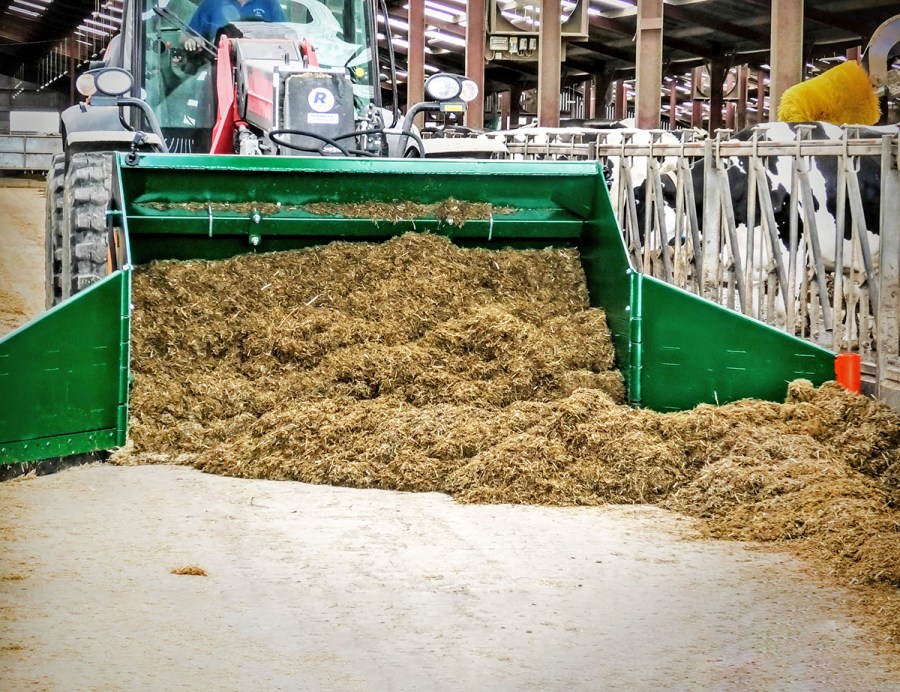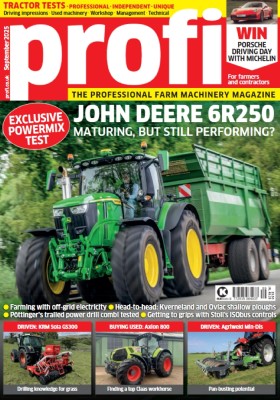When looking to feed only quality forage, some older material may end up in the muck heap once the milking herd has nosed its way through it. How best to handle it?
KEEPING IT BRIEF
- J F Hudson developed the Silo Crab after being approached by a dairy farm looking for a neater handling solution.
- The crab arms sweep the accumulated forage into the bucket without having to load against a physical stop.
- Costs around £7,500 for the 2.1m wide, 3.39m³ version.
With high yielding dairy cows, you get out what you put in … and that includes the quality of the mixed ration you put in front of them. But once they have finished nosing through the ration and picked out what they want, what do you do with the leftovers the following day? Do you stick it in front of another group, do you measure how much feed was not used or do you push the feed out the cow barn door towards the farm’s muck midden?
J F Hudson was given the challenge by one 1,300-cow farm to come up with a way to gather the left-over feed so that it could be reused; high yielders first, lower yielders, dry cows and then finally the beef animals would get the hand-me-down ration. The main issue was gathering up the remaining forage was taking time: long feed fences in the cow sheds with nothing to load against meant multiple half-loaded bucket runs, not to mention wear on the bucket edge.
Grab it while you can
The solution was to add wings to a general-purpose bucket that would hinge out and sweep the ration into the bucket. Once the bucket was near full or had reached the end of the run, the wings could be folded back around, shoving the feed into the bucket. The system has worked well for over five years now, to the point that J F Hudson is now marketing the loader attachment as the Silo Crab.
One fit
While the initial concept used an existing on-farm bucket to properly test the design, production machines are built around a new bucket. This can be 2.10m wide, which usually aligns with the width of the handler; the 1.80m version is considered the sweet spot as it prevents the loaded bucket from being as hefty — it weighs around 1,100kg empty — and also means you can focus on one side of the feed passage at a time.
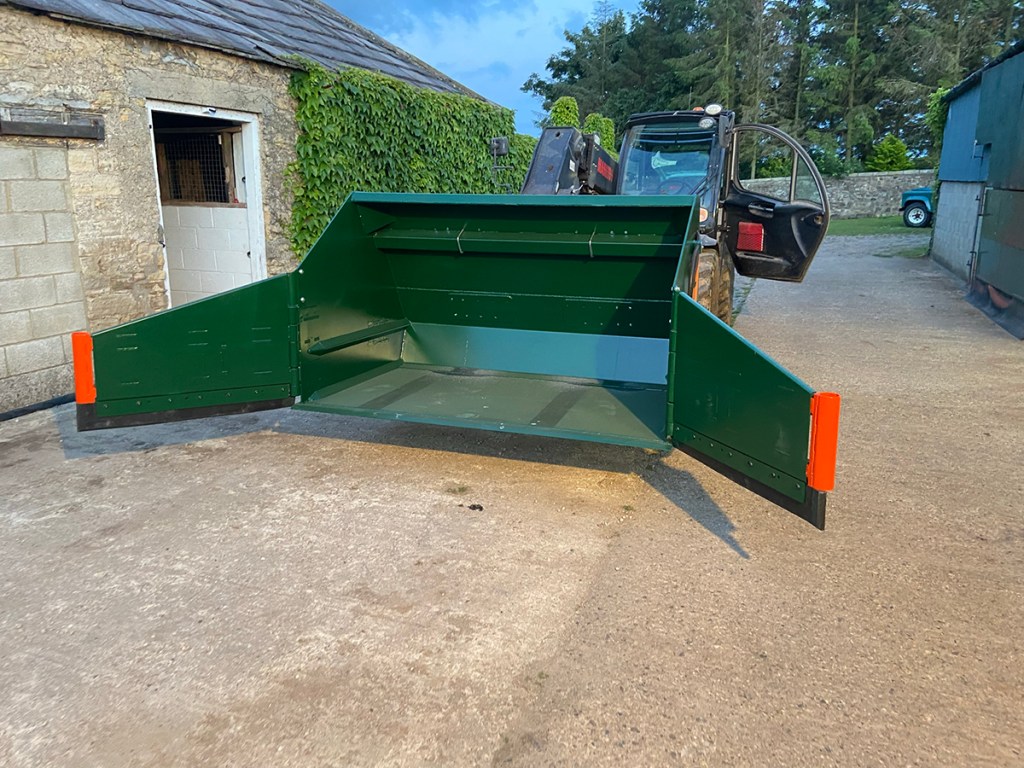
The taper on the wing doors (or crab-like pincer arms, depending on your outlook) means cows can safely lift their heads over the passing machine.
On the host farm, the collected feed is then placed back in the clamp where it is reloaded into the self-propelled feeder, not only to be redistributed to one of the groups lower in the pecking order but also so a figure can be put on the amount of feed being eaten to help pin down precise costs. James Hudson adds that this reuse of a still high value ration means the attachment is one that will quickly pay for itself.
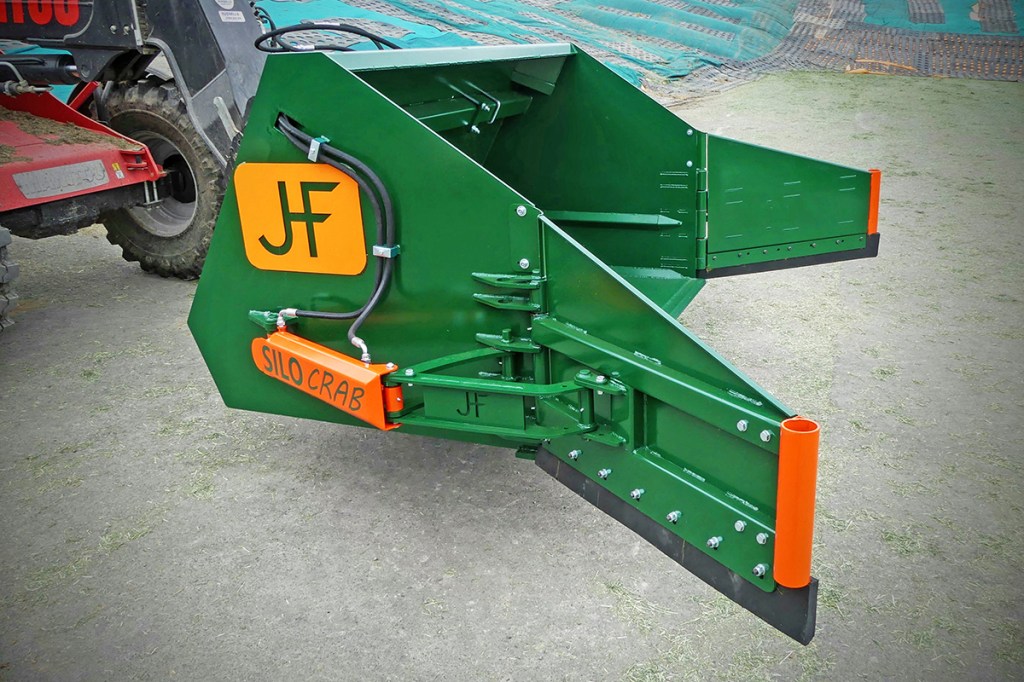
The hydraulically activated doors do not have a breakback system, but, because they open to ??m on each side, the operator has a decent view of the edge. Plus, the round ends help them to follow the wall, with the pressure in the hydraulic system providing some ‘give’. James does note that certain social media commentators have almost celebrated that they could break or damage the doors, but he adds that perhaps that means you are not a good operator and not something to be cheering about… he has a point.
Another system positive is that, because the bucketful of ration can be scooped up, there is no need to push the load to its destination, causing concrete and metal wear, not just on the bucket but also to the linkage of the handler as it jiggles over the surface.
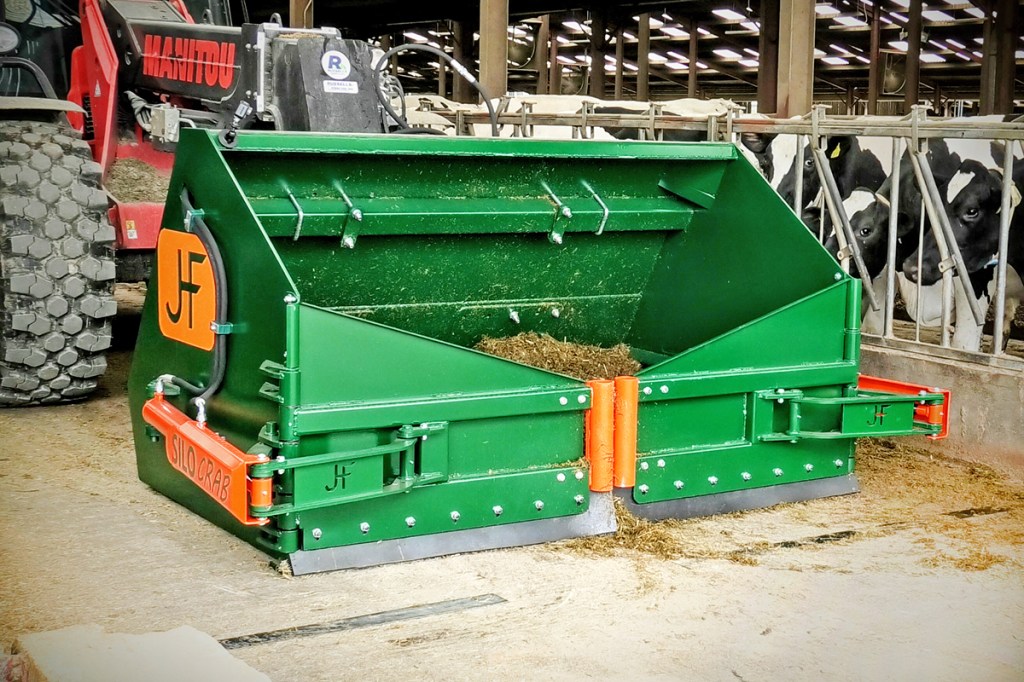
Summary
Presenting fresh rations to stock is a sure way to help feed intake, while being able to reuse high quality forage that has cost money to produce is also a very sensible approach. Admittedly, some will argue that, if one group has already picked out the best bits, there probably isn’t much point reusing the feed, especially if there are some higher energy ingredients that could be an issue with lower need animals. However, that’s an argument for another day.
One major plus for the Silo Crab is that it can safely clear away the leftovers, giving the operator a good view of outstretched cattle heads while still scooping up a loaded bucketful.
Mervyn Bailey
For more up-to-date farming news click here and subscribe now to profi and save.

